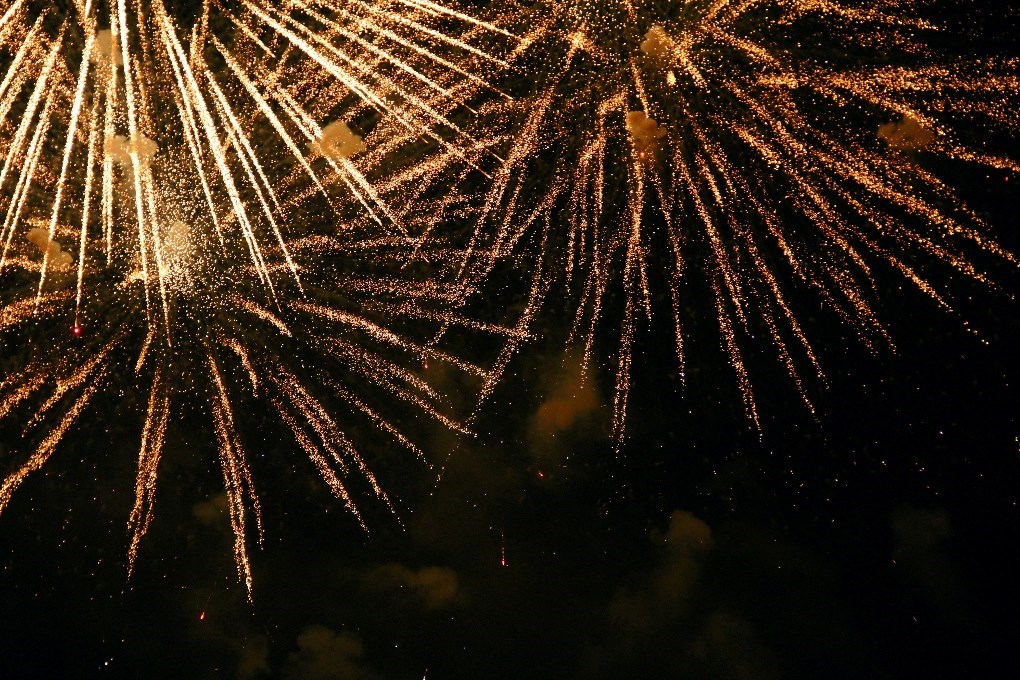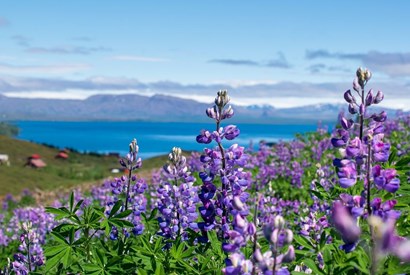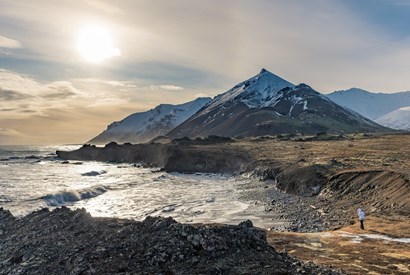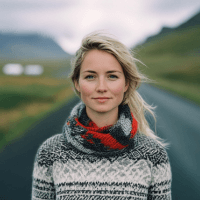Top 13 Annual Icelandic Traditions

When you visit Iceland around certain major holidays, you’ll be able to see how we celebrate Christmas and New Year’s, or Easter and the start of spring. However, Iceland’s traditions, celebrations and festivities are far more varied than just these major holidays that are celebrated elsewhere throughout Europe or North America. For that matter, the way we celebrate those major holidays is majorly different, too.
For a true glimpse into Icelandic culture and history, be sure to visit in time to catch one of these 13 annual Icelandic traditions. From feasts to festivals, Icelandic Halloween to the summer solstice here’s what you can expect.
Go to chapter
- Þorrablót: An Icelandic Winter Feast in January
- Sólarkaffi: January’s Return of the Sun
- Bóndadagur and Konudagur in January and February: Iceland’s Dual Valentine’s Day
- Bolludagur, Sprengidagur and Oskudagur: An Iceland Three-Day Food Fest in February or March
- Bjordagur: Beer Day, March 1
- Easter in March or April
- Sumardagurinn Fyrsti: The First Day of Summer in April
- Þjóðhátíðardagurinn: Iceland's National Day, June 17
- The Summer Solstice and Midnight Sun in late June
- Verslunarmannahelgi: The Icelandic Labor Day Weekend, the First Monday in August
- Réttir: The September Sheep Round-Up
- Christmas and the Yule Lads in December
- New Year’s Celebration in December
- Experience Icelandic Traditions No Matter When You Visit
Þorrablót: An Icelandic Winter Feast in January
Þorrablót is a mid-winter festival that typically runs for several weeks, starting in January and ending in February. The word “Þorrablót” refers to “Thorri” or a month of the year on the historic Icelandic calendar that correlates with mid-January to mid-February, and “blot,” or a feast that celebrates one of the Norse gods. In this instance, the Norse god in question is Thor, and, historically, Icelanders would use this celebration to ask Thor for better weather — a relatable ask, if you’ve ever experienced an Icelandic winter.

Photo by MBL
Today, though, the focus is less on the weather and more on the food. This is the best time to really dig in and try all of the most famous Icelandic cuisine, much of which has been enjoyed for centuries. For example, Iceland traditional foods that you can expect to enjoy during this festive season include foiled lamb’s head, smoked lamb, smoked horse, blood pudding, fermented Greenland shark, whale blubber, sour ram’s testicles and more. Of course, with all this traditional Icelandic food, you’ll need something to drink, like the traditional Brennivin, a spirit only produced in Iceland.
Other aspects of the festival beyond the food include live music and other artistic performances.
Sólarkaffi: January’s Return of the Sun
In late January, Icelanders celebrate the lengthening daylight hours and the return of the sun with a celebration that literally translates to “sun coffee.” While the holiday is typically held on January 25, some prefer to celebrate this most fun and wholesome of Icelandic traditions only once they actually have a day of sunshine at their place of residence.

Whatever day it’s celebrated, though, the merriment is much the same. People will toast the sun with a cup of hot coffee or another hot drink, and sweets are often served — usually pancakes or pastries. Icelandic pancakes are a little thinner than American pancakes, more like crepes, and are often served with jam and cream. In addition to being celebrated in private homes, Sólarkaffi is also often celebrated in schools and workplaces.
Bóndadagur and Konudagur in January and February: Iceland’s Dual Valentine’s Day
Other countries may have the singular Valentine’s Day to celebrate loved ones, partners and spouses, but Iceland has two separate days, one in late January to celebrate the men in one’s life, and one in late February, to celebrate the women in one’s life. The exact dates are dictated by the traditional Icelandic calendar, but they usually fall around January 25 and February 24.

The first of the two days is Bondadagur, or Man’s Day, and it’s a time to recognize the male head of the household. Traditionally, this holiday was also sometimes called Farmer’s Day. However, as time has gone on, the holiday has broadened and now it can be used as an excuse to celebrate any man in one’s life.
The same goes for Women’s Day, or Konudagur, in February, which was intended for the lady of the house, but which now celebrates all women. Also, traditionally, the February holiday was a time for the household to welcome the return of spring to the farm.
Whichever day, whoever you’re celebrating, though, the sentiments are usually the same. The object of affection is showered with gifts, quality time, flowers, maybe a date, etc.
Bolludagur, Sprengidagur and Oskudagur: An Iceland Three-Day Food Fest in February or March
While many cultures around the world recognize Ash Wednesday and the beginning of Lent, in Icelandic traditions, Ash Wednesday is the conclusion of a three-day, food-focused festival. If you consider yourself a foodie traveller, you need to be here for these three days that take place in either late February or early March, depending on the year and church calendar.
On the Monday before Ash Wednesday, we have Bun Day, or Bolludagur. On the Tuesday, we have Shrove Tuesday or Sprengidagur, and then Ash Wednesday is called Oskudagur. So what happens on each day?
Well, on the first day, Bun Day, children either make or are given a wand, which they then use to try to spank their parents. If they successfully manage to do so, tradition states that the parents must hand over some pastry buns. Traditionally, these are choux buns filled with cream and jam. These traditional buns can be purchased at the store — bakeries make them in incredible amounts ahead of the holiday — or they can be made at home.

Photo by Gaedabakstur
Then, there’s Shrove Tuesday and, while Bun Day is for the kiddos to indulge, it’s everyone’s turn on Tuesday. This holiday is very similar to the Fat Tuesday holiday celebrated before Lent in some other countries. The idea is basically to indulge as much as possible before one must make religious sacrifices over the Lenten period. Lots of savoury foods are served on this day, a nice contrast to all the sugar served the day before — because, let’s face it, it’s not just the kids that are eating copious amounts of cream-filled choux buns on Bun Day.
The last day of this three-day fest is Ash Wednesday, but also a bit of an Icelandic Halloween. Children celebrate it quite similarly to how children celebrate Halloween in the United States, by dressing up in costumes, playing pranks and asking for candy.
Bjordagur: Beer Day, March 1

If you thought all the indulgent fun ended with Ash Wednesday, think again. Beer Day falls around the same time, on March 1. Bjordagur recognises the end of Iceland’s prohibition, which occurred from the early 1900s and until 1989. As such, Bjordagur is a day to drink one’s fill of beer and all the rest of your favourite libations, throughout Iceland’s bars, clubs and other venues.
The best place to celebrate Bjordagur is in Reykjavik, where you’ll have a broad pick of venues in which to celebrate.
Easter in March or April
Depending on the year, Easter falls in either March or April. While you might have experienced Easter celebrations in other countries, you may be surprised to see that, in Iceland, Easter takes place over five days, versus just the three days that are often observed in the United States.
Before Easter Sunday, Icelanders begin their celebrations starting on Thursday, or Maundy Thursday, and then the celebrations continue on until Monday. Over the five days, there are often family meals with lots of delicious Easter food, as well as religious observances and Easter egg hunts.

Photo by Visit Iceland
For a full overview of what you can expect if you visit during this time, be sure to read our guide to spending Easter in Iceland. There are a few things you’ll want to make a note of, such as the fact that, during certain days within the five days, not much will be open throughout the country, particularly not bars or clubs, and some restaurants.
Sumardagurinn Fyrsti: The First Day of Summer in April
Spring and fall aren’t very memorable or long-lasting in Iceland, so rather than celebrate the first day of spring in any grand way, we celebrate the first day of summer, in late April. Based on the old Icelandic calendar, the holiday falls on the first Thursday after April 18. The public holiday includes lots of festivities, such as parades and live entertainment, as well as yummy food.

Traditionally, Icelanders believed that it was good luck for the coming summer if, the night before Sumardagurinn Fyrsti, the temperature fell below freezing. As such, people would sometimes leave out a bowl of water the night before the holiday, to see if it would freeze and if good luck was on the horizon.
Þjóðhátíðardagurinn: Iceland's National Day, June 17
Iceland’s National Day, June 17, celebrates the country’s independence from Denmark as of 1944. If you’re worried you can’t quite pronounce the holiday’s name, don’t worry; often, we just refer to it as “June 17” and everyone knows exactly what you mean. The date is also significant as it is the birthday of Jón Sigurðsson, leader of an Icelandic independence movement in the 1800s.

Photo by Stykkisholmur
There are lots of festivities and events, and many businesses are closed for the holiday. You won’t have to look long or hard for something to do, if you visit for Thjodhatidardagurinn. One of the main events is a commemorative ceremony at the parliament in Reykjavik, with a speech from the prime minister and a parade. Around the area, there will be concerts and street performers, family-friendly activities, food trucks and more. For more details on the day's program, visit June 17 Program.
The Summer Solstice and Midnight Sun in late June
Spending the Summer Solstice in Iceland will be like nothing you’ve ever experienced before. While you may think that the sun stays up late in the summer in your home country, in Iceland, the sun stays up nearly the entire day, which is why we reference the Midnight Sun in the summer. You can literally still see the sun’s glow at midnight. The Midnight Sun is most visible around the Summer Solstice, which is in late June, normally June 21.

To celebrate, Icelanders make a point to take full advantage of the long daylight hours, by enjoying outdoor activities as late as possible. There’s also a huge music festival — the largest in the country — in Reykjavik, that takes place every Summer Solstice, the Secret Solstice Festival.
Verslunarmannahelgi: The Icelandic Labor Day Weekend, the First Monday in August
While Canada and the United States have Labor Day on the first Monday in September, Iceland has Commerce Day on its first Monday in August, and the idea is very similar. This public holiday is a long weekend that’s used for enjoying end-of-summer activities and soaking up the last of the warm, sunny weather before fall begins and the weather turns cooler. Icelanders might go to festivals and other outdoor events, or go camping and generally enjoy being outside.

One very big event that occurs over this weekend is Þjóðhatið, which takes place on an island off the Icelandic coast. The outdoor festival is varied and brings together live music, fireworks and, the most popular part of the festival, a singalong with thousands of people joining in. The festival dates back quite a while, first held in the late 1800s. Now, it’s the largest multi-day festival in Iceland.
Réttir: The September Sheep Round-Up
Animal lovers will want to definitely make tracks for Iceland for this special event that occurs in September. This is essentially a sheep round-up, wherein Icelandic farmers take to the rural areas of the country on horseback to seek out their wandering, grazing sheep. There are hundreds of thousands of sheep to round up during this process, so visitors are invited to join in on the fun, so long as they have the necessary horseback riding skills. If they do, they can pay a tour to participate.

Otherwise, you can just sit back as a spectator and watch as the farmers herd the sheep all over the country and into their ancient stone pens.
Christmas and the Yule Lads in December
Just as is the case with Easter, if you’ve experienced Christmas elsewhere, you haven’t experienced Christmas like we do it in Iceland. The holiday here is a big event, with lots of festivities occurring over a long time period.
While you’ll find fun happenings all throughout December, things really begin to kick off in the 13 days before Christmas. During these two weeks, children await what is known as the 13 Yule lads. These Nordic creatures come from the mountains and into the villages to give good children a small gift every night, while they’re asleep. Similar to Santa Claus leaving gifts in stockings, the Yule lads leave their gifts in children’s shoes — though instead of coming just once a year, the Yule lads come by for 13 nights in a row.

On Dec. 23, we have what’s called Thorlak’s Mass. This is like a Christmas Eve, but like a Christmas Eve more for friends and tying up any last-minute obligations. You probably wouldn’t have your family celebration on this day. Instead, you might get together to swap presents with others that aren’t quite as close to you, or you might attend a party.
Then, on Dec. 24, Christmas Eve, we reserve that time for more private celebrations and our more immediate loved ones. Many families will have their big Christmas feast on Christmas Eve night, rather than on Christmas. Afterward, they’ll attend a church service if they’re religious, or they’ll simply exchange presents with the family and have an enjoyable evening at home.
On Christmas Day, the celebration extends outward again, and Icelanders might celebrate with extended family and friends, exchanging more gifts and having more great food, or just generally relaxing and enjoying the holiday.
Boxing Day follows on Dec. 26, and this day is a day of remembrance for some, and a time to visit loved ones’ graves.
For a full overview of how to go about celebrating the season during a December trip to Iceland, make sure to read our full guide to spending Christmas in Iceland.
New Year’s Celebration in December

If you’re going to be spending Christmas in Iceland, you might as well extend your stay and experience Icelandic traditions for New Year’s as well. We have all your typical traditions, such as big fireworks displays to ring in the new year, but other favourites include building big bonfires to congregate around as we celebrate. We also have a favourite television program that comes on every New Year’s, called Aramótaskaupið, or The New Year’s Comedy.
For a full overview, check out our guide to spending New Year’s Eve and New Year’s Day in Iceland.
Experience Icelandic Traditions No Matter When You Visit
With celebrations and festivities occurring all throughout the year, you can likely find a way to partake in Icelandic traditions no matter when you visit. However, no matter when you do visit, or what your plans are when you get here, you’re going to need a way to get around.
Booking a rental car for your trip to Iceland is a great option for so many reasons. You’ll be able to easily go wherever you want throughout the country, without relying on tour guides. You’ll be able to plan an itinerary that’s as spur-of-the-moment as you like, as you can come and go as you please. You’ll simply be able to do and see more, with the freedom of a rental car.
Check out Lava Car Rental’s full lineup of rental vehicles and choose the best fit for your family. Whether you need a large SUV to fit your entire crew, or you want something affordable and compact, we have you covered with an array of options.
Book your Car in Iceland Today




